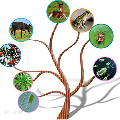Autonomous driving has achieved a significant milestone in research and development over the last decade. There is increasing interest in the field as the deployment of self-operating vehicles on roads promises safer and more ecologically friendly transportation systems. With the rise of computationally powerful artificial intelligence (AI) techniques, autonomous vehicles can sense their environment with high precision, make safe real-time decisions, and operate more reliably without human interventions. However, intelligent decision-making in autonomous cars is not generally understandable by humans in the current state of the art, and such deficiency hinders this technology from being socially acceptable. Hence, aside from making safe real-time decisions, the AI systems of autonomous vehicles also need to explain how these decisions are constructed in order to be regulatory compliant across many jurisdictions. Our study sheds a comprehensive light on developing explainable artificial intelligence (XAI) approaches for autonomous vehicles. In particular, we make the following contributions. First, we provide a thorough overview of the present gaps with respect to explanations in the state-of-the-art autonomous vehicle industry. We then show the taxonomy of explanations and explanation receivers in this field. Thirdly, we propose a framework for an architecture of end-to-end autonomous driving systems and justify the role of XAI in both debugging and regulating such systems. Finally, as future research directions, we provide a field guide on XAI approaches for autonomous driving that can improve operational safety and transparency towards achieving public approval by regulators, manufacturers, and all engaged stakeholders.
翻译:过去十年来,自主驾驶在研发方面取得了一个重大里程碑,对该领域的兴趣日益浓厚,因为在道路上部署自操作车辆将带来更安全和更无害生态的运输系统。随着计算强大的人工智能(AI)技术的崛起,自主车辆可以高精准地感知其环境,作出安全的实时决定,在没有人类干预的情况下更可靠地运作。然而,自主驾驶汽车的智能决策在目前先进状态下一般无法为人所理解,这种缺陷阻碍了这种技术在社会上被接受。因此,除了安全实时决策之外,自主车辆的AI系统还需要解释这些决定是如何构建的,以便在许多管辖区遵守监管。我们的研究全面揭示了为自主车辆开发可解释的人工智能(XAI)方法的全面思路。特别是我们作出以下贡献:首先,我们透彻地概述目前人类在解释最新自主车辆行业中的差距,这种缺陷阻碍了这种技术在社会上的可接受性。我们随后展示了该领域解释和解释的接受者的分类和解释性。第三,我们提出了一个框架,用以构建一个最终驱动AAI研究方向的架构,从而实现A型自主驱动系统,从而实现AA型系统的未来方向。


